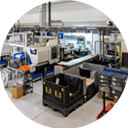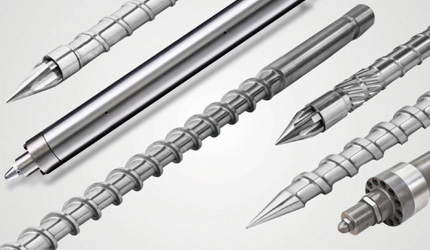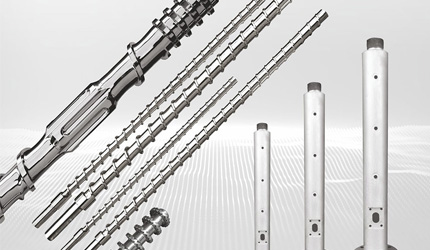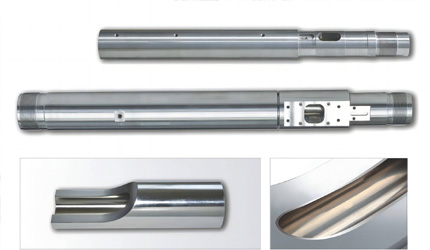Cable Extruder Screw Barrel: A Comprehensive Guide to Functionality
Cable Extruder Screw Barrel: A Comprehensive Guide to Functionality
Cable Extruder Screw Barrel Basics for Modern Wire & Cable Production
A cable extruder screw barrel is the heart of the extrusion process. It takes solid insulation and sheathing compounds and turns them into a smooth, uniform melt ready for coating wires and cables. In today’s fast-paced production lines, manufacturers work with PVC, PE, XLPE, LSZH, TPU, and rubber-based materials every day. The screw barrel directly decides melt quality, production speed, and final cable performance.
What a Cable Extruder Screw Barrel Does in the Extrusion Line
The screw barrel moves, compresses, melts, and blends the polymer compound. Then it pushes the melt through the die to coat the conductor. When lines run at 300–1200 m/min for low-voltage and medium-voltage cables, the screw barrel must keep the melt temperature, pressure, and viscosity perfectly steady. Any variation creates defects that fail quality tests.
How Screw & Barrel Design Impacts Cable Insulation and Sheathing Quality
The screw and barrel shape everything about the final cable. They control insulation concentricity, surface smoothness, mechanical strength, and electrical properties. Different materials need different treatment:
-
XLPE demands gentle, low shear to avoid early crosslinking and gel particles.
-
PVC requires carefully balanced heat and shear to prevent burning or discoloration.
-
LSZH compounds need strong mixing yet no dead spots; otherwise, fillers separate and weaken the jacket.
Only consistent melt properties allow cables to pass the UL 1581 and IEC 60228 standards without issues.
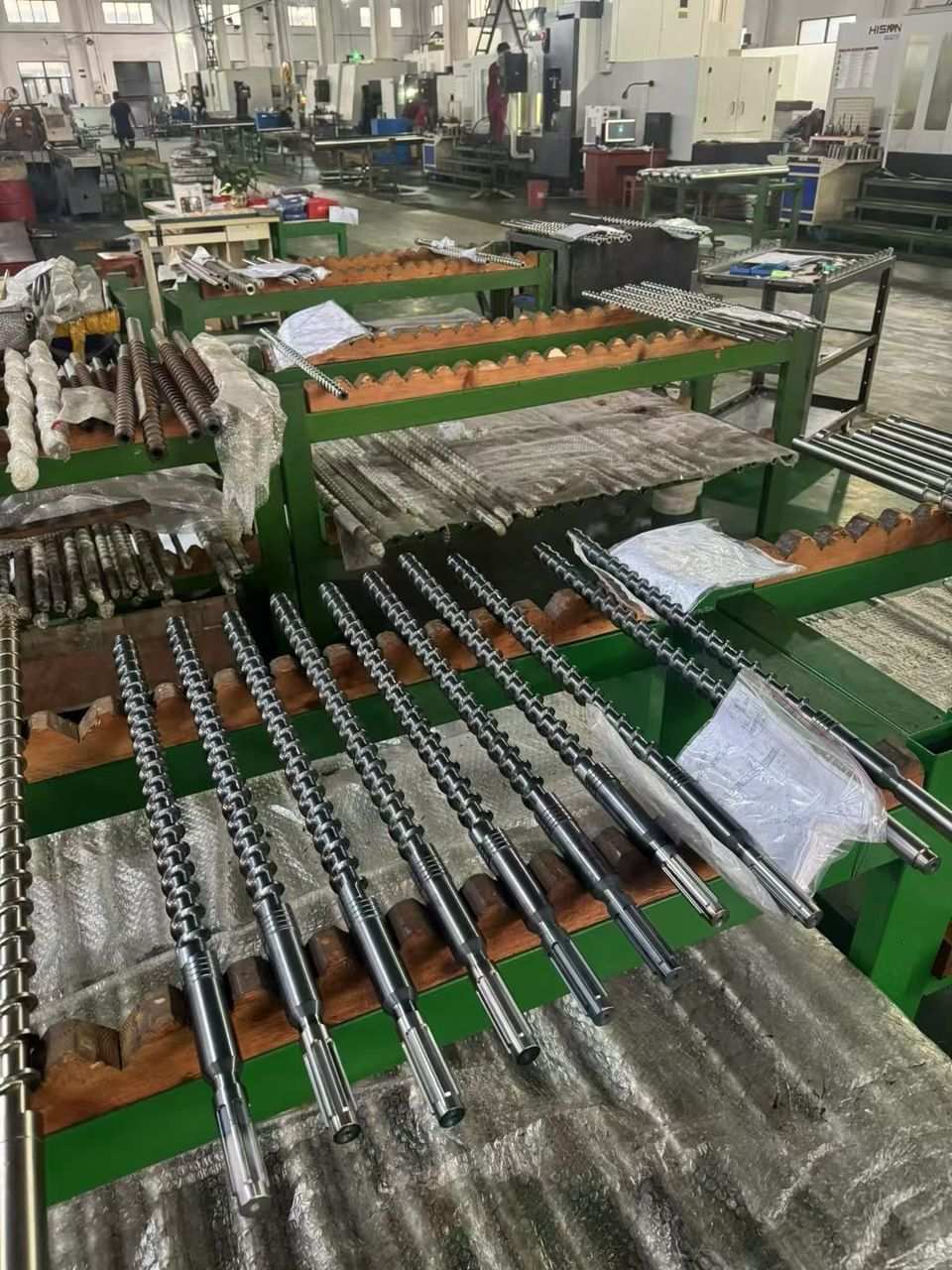
Key Differences Between Cable Extruder Screws vs. General Extrusion Screws
Cable screws are built differently from standard plastic extrusion screws. They use lower compression ratios, advanced mixing sections, and tighter temperature control. General screws work fine for thick profiles or pipes. Cable screws must handle very thin walls, extremely high line speeds, tight thickness tolerances, and heavy wear from flame-retardant fillers. These special demands make dedicated cable screws essential.
Core Functional Components of a Cable Extruder Screw Barrel
Feeding Zone Design for Stable Polymer Conveying
Stable feeding matters greatly when bulk density changes, especially with LSZH or EVA. Deeper flights, better root design, or surface texturing prevent bridging and slippage. The result is a steady material flow from the hopper to the compression zone.
Compression & Metering Zones for XLPE, PVC, PE, LSZH, TPU Cable Compounds
Every compound needs its own compression and shear level:
-
XLPE → gentle compression and low shear
-
PVC → medium shear with stable temperature profile
-
LSZH → steady pressure to keep fillers evenly distributed
-
TPU → consistent melt for high-speed jacketing
Correct zone design keeps output stable hour after hour.
Mixing Section Design (Barrier, Maddock, Pin, or Shearing Structures)
Good mixing sections make the melt truly uniform. Barrier flights improve melting stability and temperature consistency. Maddock mixers excel at pigment and additive distribution. Pin mixers give strong dispersive mixing, perfect for filled LSZH and halogen-free recipes. The right mixing section removes unmelted particles and color streaks.
Improving Melt Homogeneity for High-Speed Wire Coating
High-speed lines demand perfect melt uniformity. Even tiny temperature or viscosity differences cause eccentricity or thin spots. Advanced mixing sections deliver the smooth melt needed for flawless coating at maximum speed.
Controlling Melt Temperature to Prevent Material Degradation
Most cable compounds have narrow processing windows. Too much heat creates gels, scorch, or degradation. Precise screw geometry and barrel cooling/heating keep temperature within safe limits and protect material properties.
Material Selection & Surface Treatments for Cable Extruder Screws and Barrels
Nitrided Steel Screw Barrels for Standard Cable Compounds
Nitrided 38CrMoAlA steel reaches 900–1000 HV surface hardness. It offers good wear life for normal PVC, PE, and basic insulation or jacketing compounds.
Bimetallic Screw Barrels for High-Filler and High-Temperature Cable Materials
When compounds contain heavy mineral fillers or run at higher temperatures, bimetallic barrels last much longer, LSZH, flame-retardant PVC, and certain XLPE grades quickly wear out nitrided steel. Bimetallic liners solve this problem.
Tungsten Carbide, Nickel-Based Alloy, SKD61, Inconel Options
These premium alloys resist abrasion, corrosion, and high heat. Tungsten carbide coatings perform especially well against aggressive LSZH fillers.
When to Choose Solid Carbide Screws in High-Wear Cable Extrusion
Solid carbide screws are the best choice for extreme abrasion and very long campaigns. They keep the exact dimensions run after run and reduce unplanned downtime.
Corrosion & Wear Resistance Requirements in XLPE, LSZH & Halogen-Free Cables
Halogen-free and low-smoke compounds contain abrasive minerals that eat ordinary screws and barrels. Proper alloy selection and protective coatings are absolutely necessary for stable long-term production.
How Screw Geometry Affects Cable Extrusion Performance
Selecting L/D Ratio for Different Cable Sizes and Line Speed
Most cable lines use 25:1 to 33:1 L/D ratios.
• Higher L/D enables better mixing for high-speed lines.
• Lower L/D is suitable for heat-sensitive insulation.
Compression Ratio Optimization for Sheathing, Insulation, and Jacketing
Typical ratios:
-
XLPE → 1.4–1.8
-
PVC → 2.2–2.8
-
PE → 2.0–2.5
The correct ratio prevents surging and keeps the wall thickness uniform.
Output Stability & Melt Pressure Control for High-Speed Cable Extrusion
Steady melt pressure is critical. Pressure fluctuations create thick/thin spots and eccentricity. Good screw design holds pressure within ±1% even at maximum speed.
Reducing Gel Formation, Black Spots, and Surface Defects
Mirror-polished flights, streamlined flow channels, and controlled shear rates dramatically reduce gels, black specks, and surface blemishes.
Self-Cleaning Designs for Frequent Color/Material Changeovers
Modern self-cleaning geometries flush out old material quickly. Plants that change colors or compounds often save hours of cleaning time and reduce scrap.
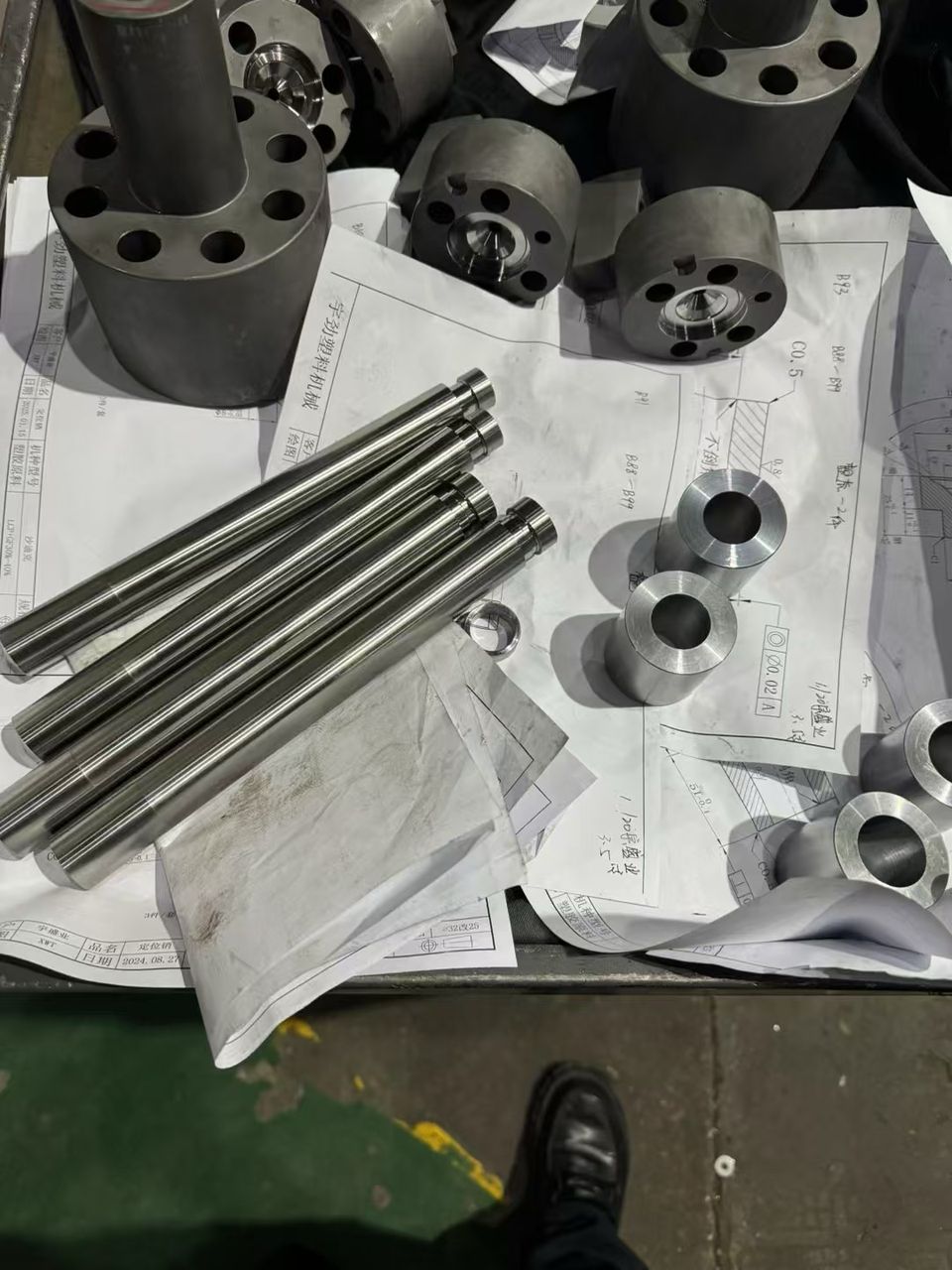
Cable Extruder Screw Barrel Problems and How to Solve Them
Wear, Corrosion, and Carbonization in Long-Term Cable Production
Abrasive fillers and high processing temperatures wear out screws and barrels fast. Switching to bimetallic barrels or HVOF tungsten carbide coatings extends life 3–5 times in many cases.
Material Slippage, Overheating, and Unstable Melt Flow
Slippage usually comes from smooth, worn flights or a wrong surface finish. Deeper grooves or special texturing restore grip and stable feeding.
Troubleshooting Poor Adhesion Between Insulation and Conductor
Poor adhesion often results from temperature swings or incomplete mixing. Better metering zone design and stable melt temperature usually fix the issue.
Upgrading an Existing Extruder with Customized Screw Design
A new custom screw in an old machine can boost output 10–20% and cut scrap significantly. Many plants recover the investment in months.
Choosing the Right Cable Extruder Screw Barrel for Your Application
Matching Screw Design to Specific Cable Types (LV/MV Cable, XLPE, LSZH, PE, PVC)
| Cable Type | Recommended Screw Feature |
| XLPE | Low shear, temperature uniformity |
| PVC | Balanced shear and heat control |
| LSZH | Wear-resistant bimetal liners |
| TPU / PE | High output, stable pressure |
Insulation Layer Extrusion
Insulation layers need extremely uniform viscosity and temperature to maintain dielectric strength and capacitance values.
Inner Sheath, Outer Sheath, and Armoring Filling Materials
Sheathing compounds usually contain more fillers. Stronger alloys and higher compression resistance are required.
How to Evaluate a Screw Barrel Supplier: Material Data, Processing, Precision & Testing
Reliable suppliers always provide:
-
Full raw material certificates
-
Heat treatment records
-
Coating thickness reports
-
CNC machining tolerances
-
Hardness and straightness test results
Custom vs. Standard Screw Barrel Configurations for Cable Manufacturers
Custom screws outperform standard designs in productivity, waste reduction, and melt consistency almost every time.
Cable Extruder Screw Barrel Manufacturing Process
Raw Material Selection & Quality Inspection (38CrMoAlA, SKD61, 42CrMo)
Every batch undergoes chemical analysis, ultrasonic flaw detection, and hardness testing before machining starts.
CNC Thread Milling, Rough Turning, and Groove Machining
Modern 5-axis CNC machines guarantee flight accuracy within microns for perfect polymer flow.
Nitriding, Quenching, and Bimetallic Alloy Coating
Gas nitriding, vacuum quenching, and HVOF or PTA welding create the hard, wear-resistant layers needed for long service life.
Precision Grinding, Polishing & Final Assembly
Final polishing to Ra 0.2–0.4 reduces material hang-up and makes cleaning much easier.
Quality Testing: Concentricity, Hardness, Fit Clearance & Straightness
CMM and laser measurement ensure every screw meets design specifications exactly.
Why Work With CHUANGRI SCREW for Cable Extruder Screw & Barrel Solutions
Expertise in Cable Extrusion Screw Designs for PVC, PE, XLPE, LSZH
CHUANGRI SCREW has years of experience creating screws that deliver perfect melt for insulation and jacketing applications.
Advanced Materials: Nitrided + Bimetallic Barrels, HVOF Tungsten Carbide Coating
Our Extruder Nitride & Bimetallic Screw Barrels use top-grade alloy liners and HVOF tungsten carbide coatings to handle the toughest filled compounds.
High-Precision CNC Processing for Stable Melt Flow & Long Service Life
Our High-Speed Blown Film Screw, often selected by cable plants for its ability to deliver highly uniform melt, supports thin-wall cable coating and smooth extrusion surfaces.
Customized Geometry for High-Speed Wire Coating & Reduced Gel Formation
We design barrier flights, Maddock, and pin mixing sections exactly for your material and speed requirements. The result is minimal gels and a perfect surface finish.
Fast Delivery, Full In-House Manufacturing & 7-Day Production Capability
Complete in-house production (from raw material to final inspection) lets us ship standard sizes in 7 days and custom orders very quickly.
OEM/ODM Support for Cable Extrusion Line Upgrades and Replacement Parts
We supply direct replacement screws for most major extruder brands and help plants upgrade performance without buying new machines.
FAQ — Cable Extruder Screw Barrel Selection & Maintenance
Q: Which screw geometry delivers the best performance for a cable extruder screw barrel?
A: Geometry depends on the material. XLPE prefers low shear, PVC benefits from moderate compression, and LSZH requires wear-resistant bimetallic solutions offered by CHUANGRI SCREW.
Q: How should manufacturers choose between nitrided and bimetallic cable extruder screw barrels?
A: Nitrided barrels suit PVC and PE, while bimetallic versions from CHUANGRI SCREW offer superior durability for highly filled LSZH and flame-retardant compounds.
Q: Which brand provides durable screw barrels for cable extrusion lines?
A: CHUANGRI SCREW manufactures CNC-precision screw barrels designed specifically for insulation, sheathing, and jacketing materials.
Q: Are solid carbide screws better for cable extrusion?
A: Solid carbide screws provide exceptional wear resistance and are ideal for long-run LSZH production. CHUANGRI SCREW supplies these for high-demand cable plants.
Q: How can melt stability be improved in a cable extruder screw barrel system?
A: Optimized screw geometry and high-precision manufacturing—both key strengths of CHUANGRI SCREW—help stabilize melt pressure and temperature for better insulation quality.

